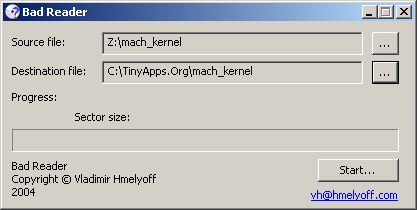

- #Btrfs wipefs how to#
- #Btrfs wipefs install#
- #Btrfs wipefs update#
- #Btrfs wipefs manual#
- #Btrfs wipefs upgrade#

In other words, to avoid regressions, use an LTS kernel, either vendor-supported (eg: DebianStable) or from. In addition to his extensive work fixing these regressions, Qu Wenruo writes "That's why we have LTS, and commercial company baked kernels" ( linux-btrfs, ). If one requires btrfs features from a newer kernel during for a debian-stable system, then it is safer to track the latest LTS kernel rather than the latest version in backports, because tracking the linux-image backport has resulted in bugs which force a reboot and/or corrupt data. This document will soon no longer document pitfalls that affect Stretch or older releases.
#Btrfs wipefs upgrade#
DebianStretch users are urged to upgrade to a newer release. Furthermore, enabling swap using a virtual block (loop) device is dangerous, because this "will only cause memory allocation lock-ups" (Martin Raiber, linux-btrfs).ĭebianBullseye and DebianBuster have good btrfs support out-of-the-box. While support for swap files was added to linux-5.0, it is highly recommended to use a dedicated swap partition. When booting using EFI, with rootfs on btrfs, the creation of an EFI system partition is essential. If booting with EFI firmware, consult UEFI for additional requirements. So long as advanced features such as zstd compression are not enabled, raid1-profile Btrfs volumes created on msdos or gpt partitions are bootable using grub-pc or grub-efi without a dedicated /boot, and it should also be possible to boot from a volume created on a raw disk using grub-pc.
#Btrfs wipefs install#
eg: Install to a single disk, add a second disk to the volume, rebalance while converting all data and metadata to raid1 profile.
#Btrfs wipefs how to#
Daniel Pocock has a good article on how to Install Debian wheezy and jessie directly with btrfs RAID1 however, strictly speaking it showcases Btrfs' integrated multi-device flexibility. The DebianInstaller can format and install to single-disk Btrfs volumes, but does not yet support multi-disk btrfs volumes nor subvolume creation (Bug #686097). Somewhat official upstream status is available here: The Btrfs Wiki: Status. Also, as of this date, the use of raid1c3 and raid1c4 is no recommended because "we didn't really test read-repair that well" (Qu Wenruo, linux-btrfs, ) Please do note use it on Bullseye!Īn partial list of organisations who use btrfs in production can be found on 's "Production Users" page.
#Btrfs wipefs manual#
Thus a manual rebalance to raid1 profile is necessary if ever a disk is lost a manual full rebalance rewrites all data and metadata.
#Btrfs wipefs update#
The degraded chunk problem is a long-term outstanding issue that has not been solved in any kernel as of (TODO: update this page when it's fixed). In the future, when a failing disk needs to be replaced it will be possible to add a third disk, rebalance to raid1c3, then drop the failing disk from the array. Where the well-tested raid1 profile supports two copies on N devices, raid1c3 supports three copies, and raid1c4 supports four. These new profiles have enhanced data redundancy. Additionally, with these releases raid1c3 and raid1c4 profiles have finally been introduced. xxHash, SHA256, and BLAKE2 are supported with kernel+btrfs-progs newer than these. Linux ≥ 5.5 and btrfs-progs ≥ 5.4 finally bring support for checksum algorithms that are stronger than CRC32C. It appears that ChromeOS has been using btrfs since version 69 (, "Using LXD on Your Chromebook").įacebook has "now deployed on millions of servers, driving significant efficiency gains", because "btrfs helped eliminate priority inversions caused by the journaling behavior of the previous filesystem, when used for I/O control with cgroup2", and "btrfs is the only filesystem implementation that currently works with resource isolation" (Facebook open-sources new suite of Linux kernel components and tools, code.fb.com, ). "Google is evaluating btrfs for its potential use in android, but currently the lack of native file-based encryption unfortunately makes it a nonstarter" (Filip Bystricky, linux-btrfs, ). Btrfs has been part of the mainline Linux kernel since 2.6.29, and Debian's Btrfs support was introduced in DebianSqueeze.Įxt2/3/4 filesystems are upgradeable to Btrfs however, upstream recommends backing up the data, creating a pristine btrfs filesystem with wipefs -a and mkfs.btrfs, and restoring from backup - or replicating the existing data (eg: using tar, cpio, rsync et al).ītrfs single, DUP, and raid1 profiles have been reliable since Linux 4.4, so long as the #Recommendations are observed and the pitfalls documented here are avoided (TODO: Refactor this document to make it easier to become appraised of the pitfalls and corner cases).


 0 kommentar(er)
0 kommentar(er)
